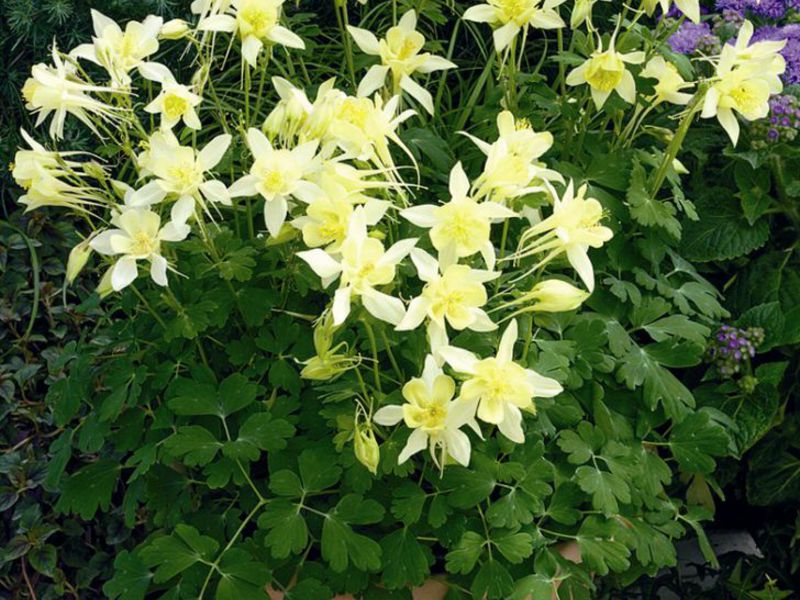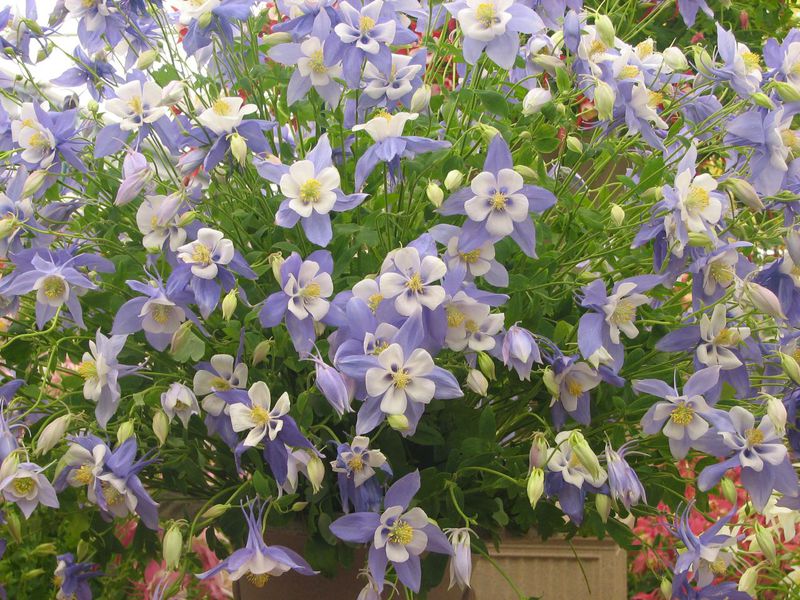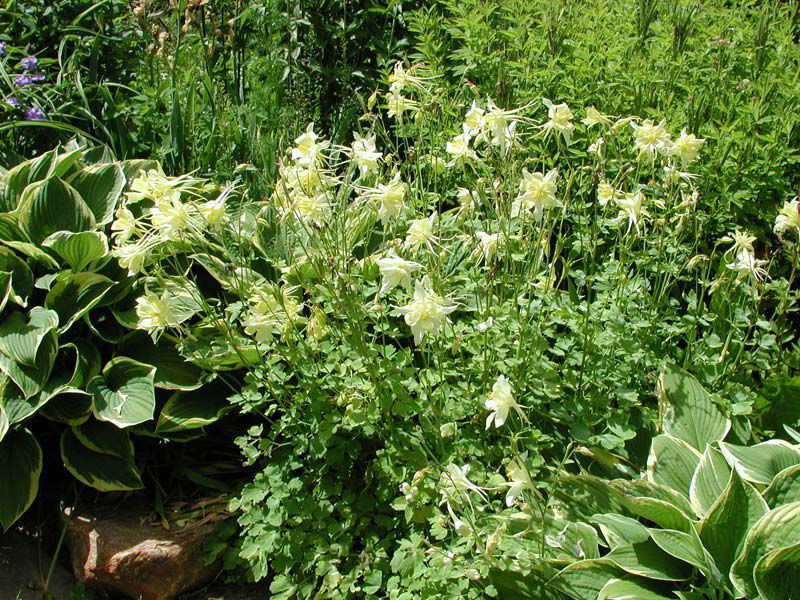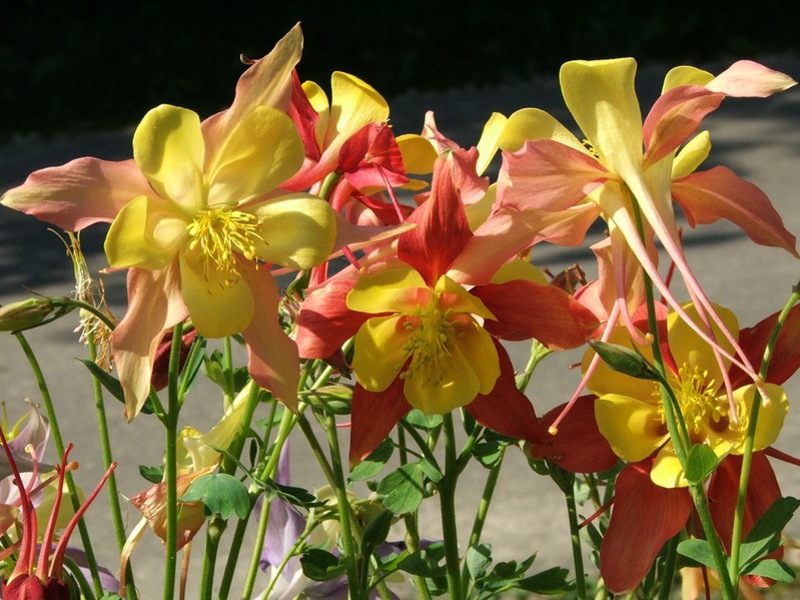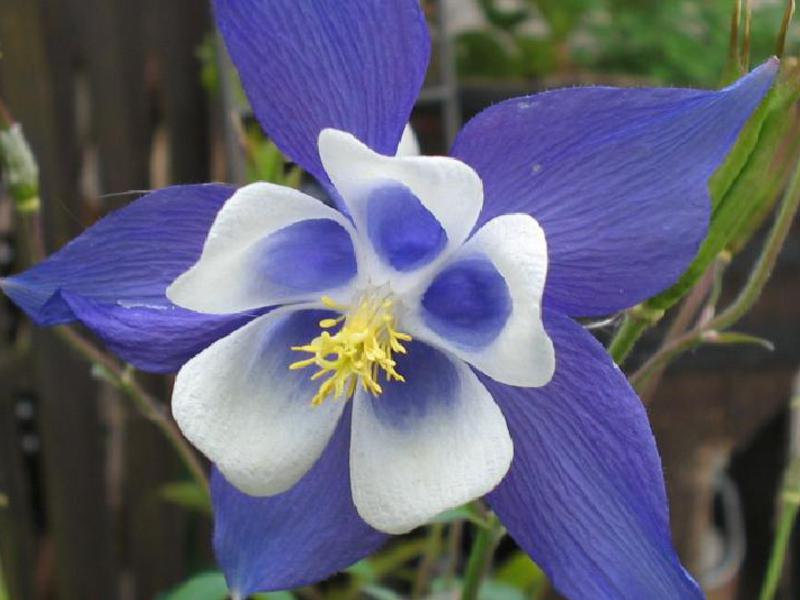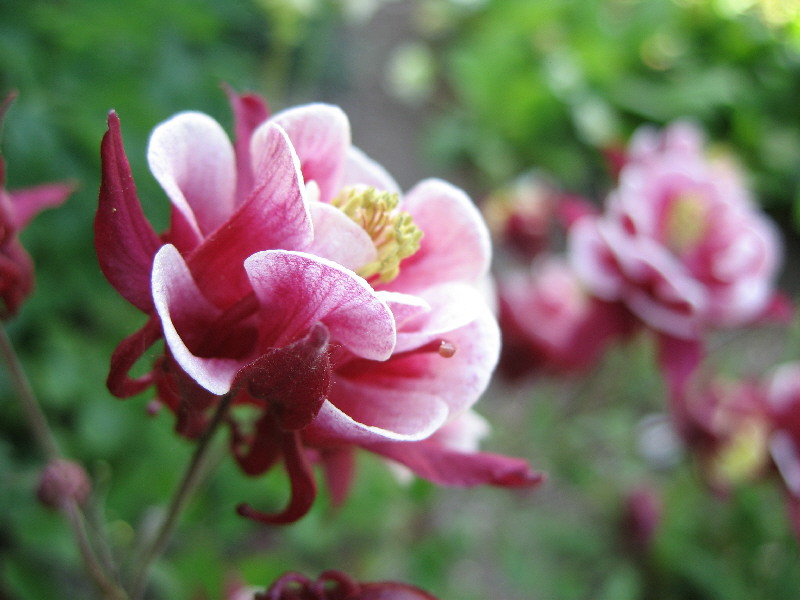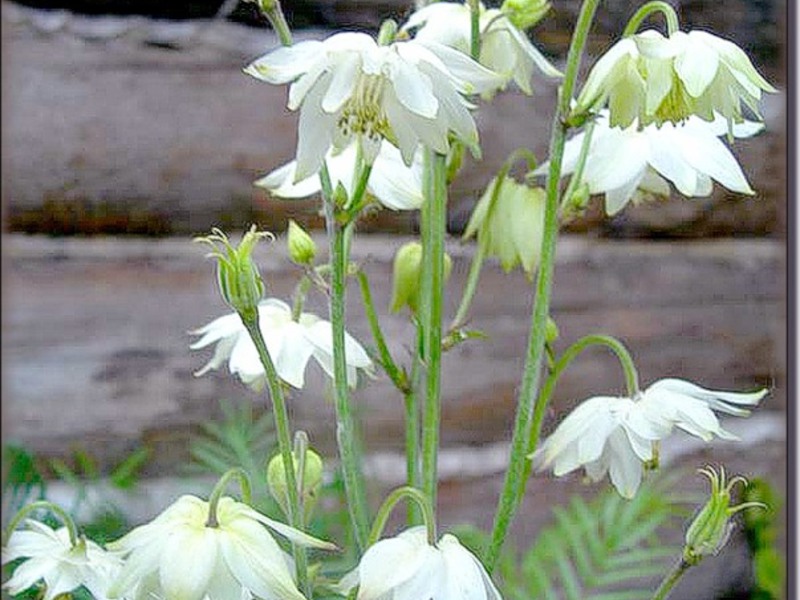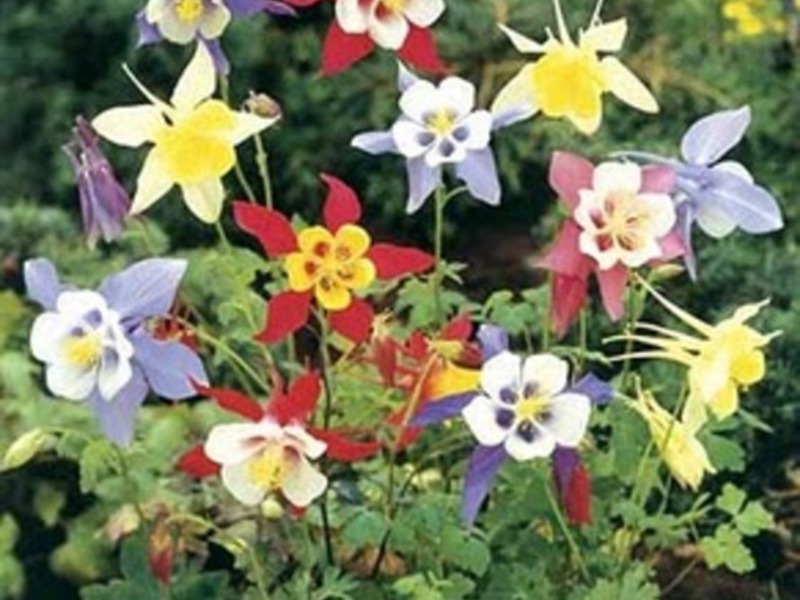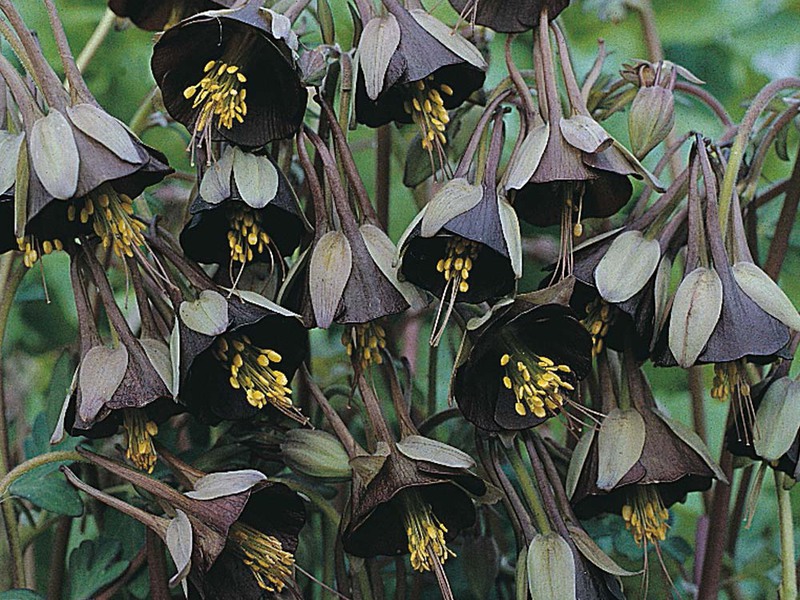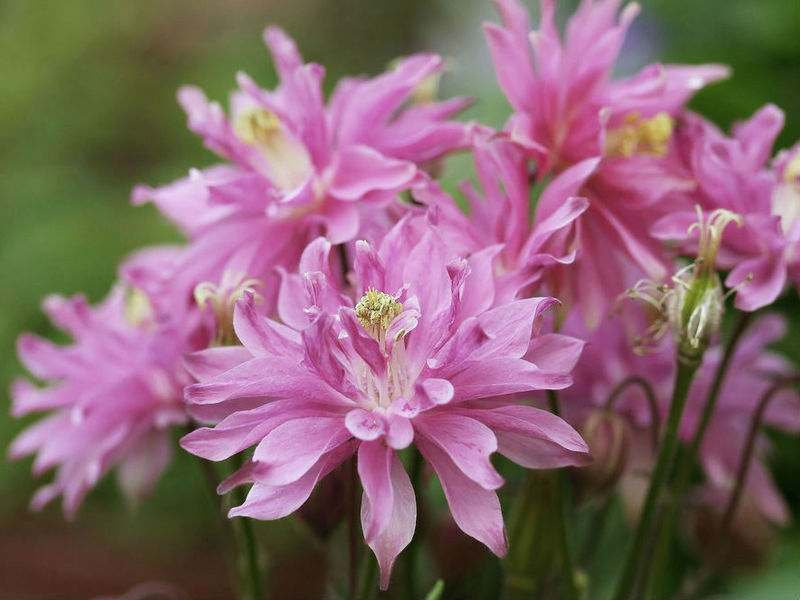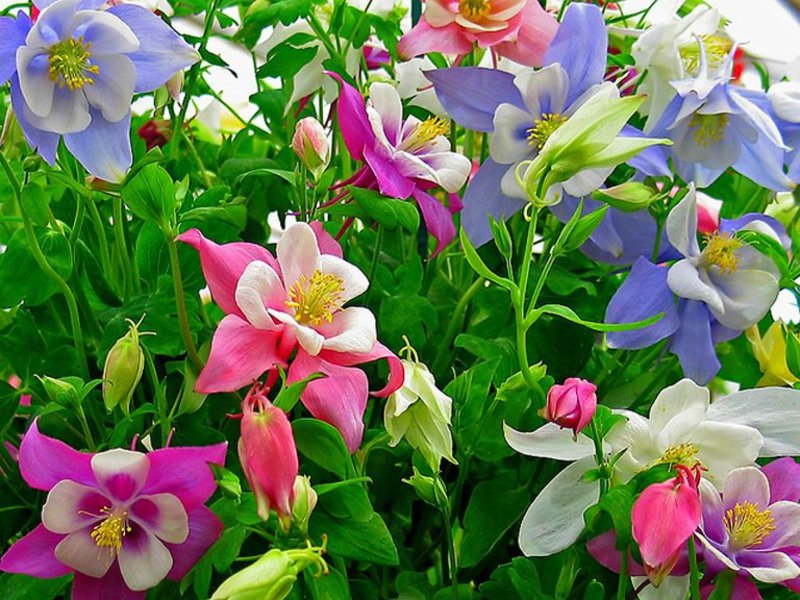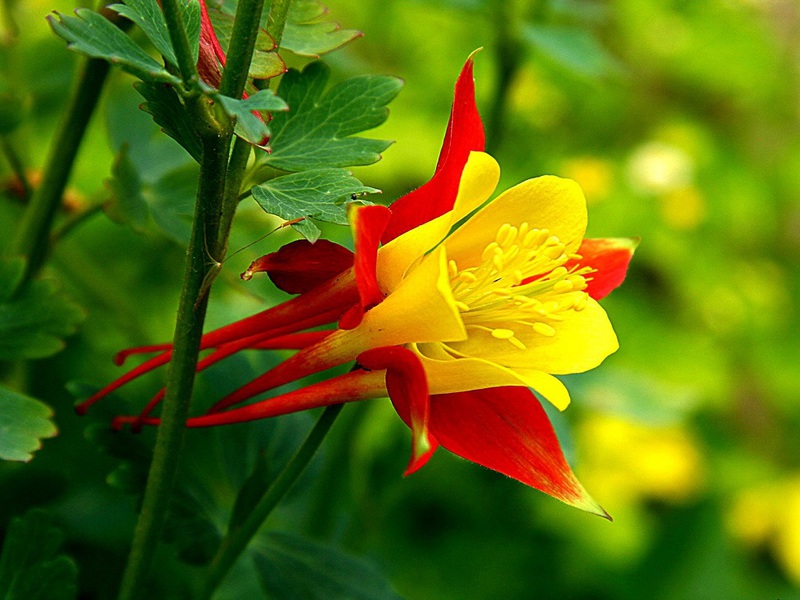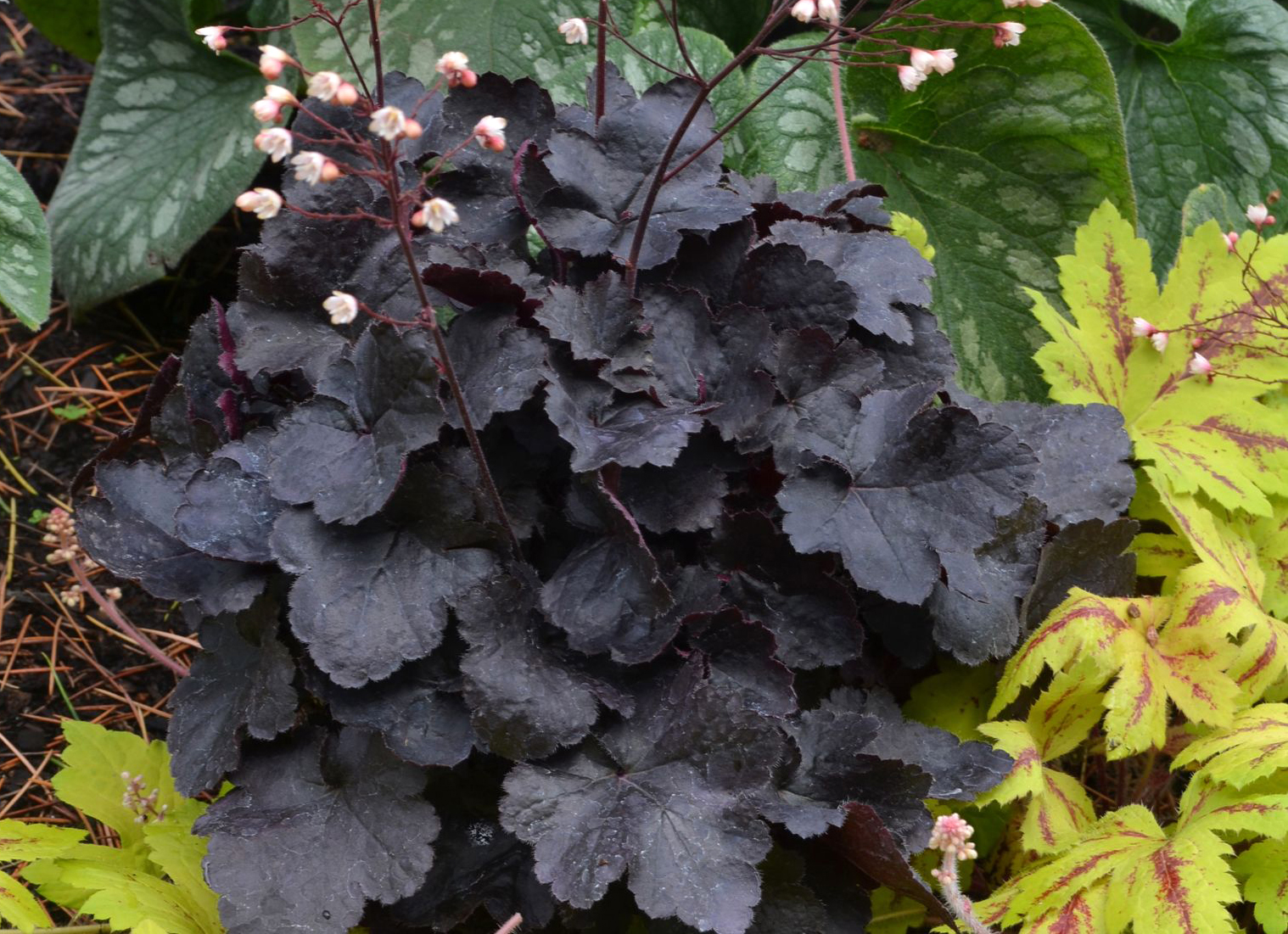One of the notable representatives of the buttercup family is the aquilegia. For the first time, a person met her in the seventeenth century and, starting from that time, this plant began to be cultivated in various places on our planet.
Aquilegia, which is often called the catchment area, is interesting primarily for its unpretentiousness and graceful appearance. This plant is undemanding to lighting, so it can be grown under the crown of trees. Being a cold-resistant plant, aquilegia can easily endure winter without special shelter. Plants can be planted on poor soils, where it can grow, without requiring special care, for many years.
Content
Botanical features
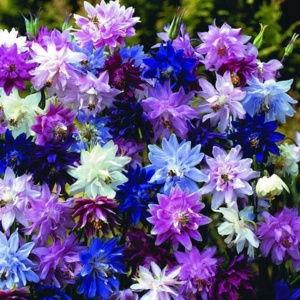 Although a genus of aquilegia has more than 100 wild species, most of them are unknown to many flower growers, since they are found only in the natural environment. The main signs of aquilegia, by which it can be recognized among other members of the family, are flowers of an unusual shape in different shades, which have an elongated spur, which effectively complement the leaves covered with a beautiful bluish bloom.
Although a genus of aquilegia has more than 100 wild species, most of them are unknown to many flower growers, since they are found only in the natural environment. The main signs of aquilegia, by which it can be recognized among other members of the family, are flowers of an unusual shape in different shades, which have an elongated spur, which effectively complement the leaves covered with a beautiful bluish bloom.
The leaves of the catchment area are rather small in size and have a length of no more than 5 cm, and a width of 2-3 cm. The leaf cover does not have the ability to retain water, therefore, in the morning, when dew falls, and after precipitation, moisture rolls down. Flowers have a corolla, which is formed by five separate petals, forming a funnel, decorated with spurs, and five sepals. The leaves are collected in a rosette, from which the stem originates, which can grow from 20 cm to 1 m. The height of the plant depends on the variety and species. The stem itself is subsequently covered with leaves and peduncles that look like panicles containing 8-12 flowers, or single flowers.
The flowering phase near the catchment begins in June. The flowers do not remain open for long - about one week. The flowering itself is also short-lived, which ends in a month. Aquilegia forms a thick root system with a thickening near the base that penetrates deep into the soil.
Closer to autumn it is forming fruit - leaf pod... It contains small black seeds that are carried by the wind when the fruit is opened.
The East Eurasian catchment species have their own peculiarities. This is manifested in the absence of spurs, as well as their yellowish tinge. In Europe, most often plants grow with flowers that provide elongated spurs, which sometimes grow bent. Aquilegia that grow on the North American continent have a slightly different structure: they form straight and long spurs, which usually have a bright shade consisting of two colors.
Varieties and types
Crossing many hybrids led to the fact that today a large number of the most extraordinary varieties of the catchment are available for cultivation, differing in a rich color palette, shape, terry, flower size and plant height.Many of them are also offered for domestic florists.
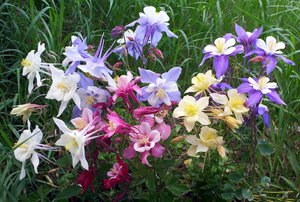 MacCana hybrids. It is a tall variety that can grow to over 1 m and produces upward-oriented flowers with long spurs that can be of various colors;
MacCana hybrids. It is a tall variety that can grow to over 1 m and produces upward-oriented flowers with long spurs that can be of various colors;- Zvezda variety series. Includes varieties Red, Pink, Blue, White, Blue. A common feature is a white center. Flowers grow small, reach a length of no more than 10 cm, have long spurs. Plants themselves can reach a height of 60-80 cm;
- Barlow variety. Adult plants reach a height of 60-80 cm, the length of the flowers is no more than 4-6 cm, they are distinguished by pronounced doubleness, have pointed petals, but are devoid of spurs;
- Type Tower. In many ways it is similar to the previous variety. The difference is in the more rounded shape of the petals, which resemble a rose;
- Queens: Yellow and Pink. They can reach a fairly high height, form flowers with brightly decorative properties. Although this variety begins to bloom later than most others, this phase lasts much longer, and a lot of flowers are formed;
- Winky. A medium-sized variety that forms strong flower stalks. It begins to bloom early enough, has a pronounced doubleness, the flowers have an upward orientation;
- Biedermeier. A medium-sized variety that can grow up to 25-30 cm. This member of the family can grow in pots. The flowers have a pronounced doubleness, the section size is 3-5 cm;
- Cameo. A low-growing variety that can grow up to 15 cm. It enters the flowering phase very early, the flowers have a rich color palette.
This is just a fraction of the wide variety of aquilegia varieties that can be found in flower shops.
Growing conditions
As in the case of growing any plant, it is important for aquilegia to create the most favorable conditions, which are determined by its needs. She can grow on almost any soil, with the exception of heavy loams.
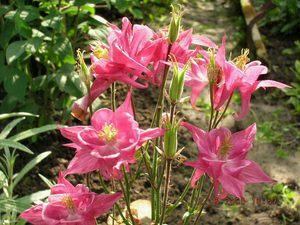 if you want to achieve more abundant flowering, so that at the same time the flowers are as large as possible and delight the eye for longer, it is recommended to choose shaded places for planting the catchment area. This must be remembered, since there are types of aquilegia for which the shadow can be destructive. If you grow plants in a dark corner, then there is a danger of infection with diseases. If during the whole day it is illuminated by the sun, then under such conditions the flowers grow rather small;
if you want to achieve more abundant flowering, so that at the same time the flowers are as large as possible and delight the eye for longer, it is recommended to choose shaded places for planting the catchment area. This must be remembered, since there are types of aquilegia for which the shadow can be destructive. If you grow plants in a dark corner, then there is a danger of infection with diseases. If during the whole day it is illuminated by the sun, then under such conditions the flowers grow rather small;- special attention should be paid to preparing the holes for planting. They must be at least 20 cm deep. Before placing the seedlings, it must be filled with a nutrient mixture. After the plant begins to grow, you need to keep the soil loose and make sure that the water does not stagnate;
- plants should be placed no closer than 20 cm. For low-growing varieties, the distance is increased to 40 cm. Moreover, planting plants in places less illuminated by the sun should be even more rare. This will create optimal conditions for ventilation, which will protect aquilegia from disease.
This plant responds positively to loosening and weeding.
Every season you can observe such a phenomenon as "bulging" of the plant from the soil. This is due to the ever increasing size of the root and stem. So that this does not lead to any complications, the root zone must be regularly sprinkled with loose soil. You can use humus or compost for this.
In the wild, the highest quality aquilegia specimens are found in humid areas. Therefore, when growing them in the garden, it is necessary to monitor the soil moisture. If the aquilegia grows for several days without watering, this will not lead to its death. Thanks to the long root, it will be able to provide itself with the necessary moisture, but it will still be harmful, since the flowers will no longer turn out so beautiful.
The greatest need for fertilizing aquilegia is at the beginning of growth and after flowering... During these periods, it is recommended to use complex fertilizers. Although a florist can understand without these recommendations when aquilegia needs nutrients. You can learn about this by reducing the number of formed colors and their loss of brightness.
When no flower remains on the plant, it is recommended to prune the shoots, as a result, only a rosette of root leaves should remain. If the owner wants to get seeds, then it is recommended to harvest them at the moment when they become brown. If you wait for them to fully ripen, then it is possible that their self-seeding will occur, and you will be left without planting material.
Aquilegia care and reproduction
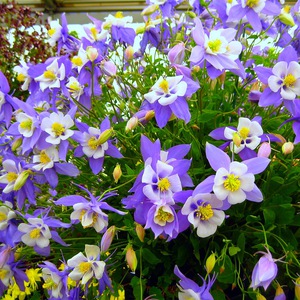 Photos of flowers can be appreciated by many gardeners, however, you can create such beauty on your site if you take proper care of them.
Photos of flowers can be appreciated by many gardeners, however, you can create such beauty on your site if you take proper care of them.
It is not recommended to grow aquilegia in one place for 6 or more years... In this case, it begins to lose its decorative properties, is more often affected by diseases, the inflorescences become smaller, and tolerates frost worse. However, by this time, new bushes have time to grow from seeds that have fallen into the soil. Therefore, the owner does not have to worry too much about this.
While this feature minimizes owner care, self seeding has a serious drawback. As a result of the ingress of seeds into the soil, self-pollination of different varieties can occur, and then next year flowers may appear that will be very different from the original variety. Although they may look different, they will no longer be as attractive. This can only be avoided by cultivating different varieties separately. You can also carry out artificial pollination, protecting the ovary with seeds. with a gauze bag.
Aquilegia seeds do not survive for long. Therefore, after their collection, sowing should be carried out in the fall or planned for the spring, having carried out the seed stratification first.
The appearance of the first flowers from plants planted with seeds occurs already in the second year, in the third year they show more magnificent flowering. In addition, young seedlings root better than adult plants.
Vegetative propagation and transplantation
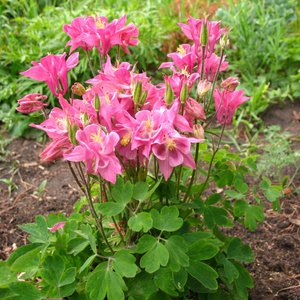 To get more representatives of a certain variety, you can use propagation methods such as dividing a bush or cuttings with root shoots. However, difficulties arise here: transplanting severely injures plants, which is due to the specifics of the structure of the conductive tissues.
To get more representatives of a certain variety, you can use propagation methods such as dividing a bush or cuttings with root shoots. However, difficulties arise here: transplanting severely injures plants, which is due to the specifics of the structure of the conductive tissues.
Therefore, it is not recommended to buy adult or old aquilegia bushes for planting. Otherwise, you will have to wait a long time until they can start growing in a new place. Indeed, during digging, the main root is seriously injured, which subsequently leads to the wilting of the plant. Therefore, when the bush is planted in a new place, you will have to wait a long time for the aquilegia to recover.
Dividing the bush
For this breeding method use copies from 3 years and older... You need to be especially careful during digging, trying to penetrate into the soil as deeply as possible.
- most of the leaves that are on the plant must be removed;
- then you need to clear the root from the ground, and divide the main root along, as a result, at least two buds and roots should be present on one segment;
- the place of the cut must be treated with charcoal, after which the "cut" is planted in the loose soil.
Aquilegia can be propagated in this way in the spring or before the beginning of autumn. Then they will have enough time for rooting so that they can get through the winter well.
Cuttings
This breeding method involves harvesting young shoots in the spring, which placed in loose soil or ordinary sand in a greenhouse.However, in the latter case, you will first have to process the planting material with a rooting agent. For early rooting, the cuttings need to create light shading, caring for them will be reduced to spraying.
Conclusion
Aquilegia is not such a well-known plant among domestic flower growers, although it also has enough properties to interest them. This plant stands out for its unpretentiousness, therefore, it can be grown from seeds in almost any personal plot. Another reason for the popularity of aquilegia is due to its beautiful flowering, so for owners looking for decoration for their backyards, this flower will be an excellent option. However, here, too, certain measures will have to be taken to prepare for planting. Best to plant aquilegia in an area with little shading... Then she will be able to form a large number of inflorescences every year.
